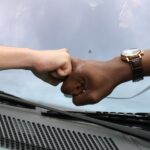
The Covid-19 pandemic has challenged our sense of safety in the world. But for some, this is not just because there is a deadly virus circulating. The fact that the virus was first identified in China has given rise to a wave of anti-Asian sentiment and reports of hate crime against East and South East Asians (ESEAs) have increased since the start of the pandemic (e.g. @besea.nn Instagram post 2021, April 9; France, 2021; Swift et al., 2021).
Even before the pandemic, in the UK, racism had been reported by one-fifth of individuals from a non-White ethnic minority background, and those who experienced racism reported distress and worse (mental) health, functioning and satisfaction with life, which may be long-lasting (Hackett et al., 2020). The recent rise in racism and racist incidents had affected the Asian community, making many of them feel unsafe (Khan, 2021).
In this study, Chae et al. (2021) have responded to the lack of quantitative research on the effects of vicariously experienced racism on mental health, and a recognition of the relevance of this subject due to increased racism because of Covid-19.
Chae argues that the effects of racism in society may be experienced directly, by being victimised because of discrimination or hate crimes, but they can also be experienced indirectly; this has been called ‘vicarious racism’. Vicarious racism can occur by witnessing or even just hearing about adverse racist events happening to other people. This could be those close to us, in our community, or when incidents are reported in the news, public figures making racist comments, or when talked about on social media – any exposure to the existence of racist views, discrimination, or hate crimes. Feeling unsafe because of racism around us, whether directly or vicariously experienced, may then lead those affected to expect future incidents, leading to a sense of hypervigilance. This process has been called ‘racism discrimination vigilance’.
In this blog, we will examine the study by Chae et al (2021) with a critical lens, followed by personal accounts from two of the blog authors and recommendations on how to best support those that are affected by direct or vicarious racism.
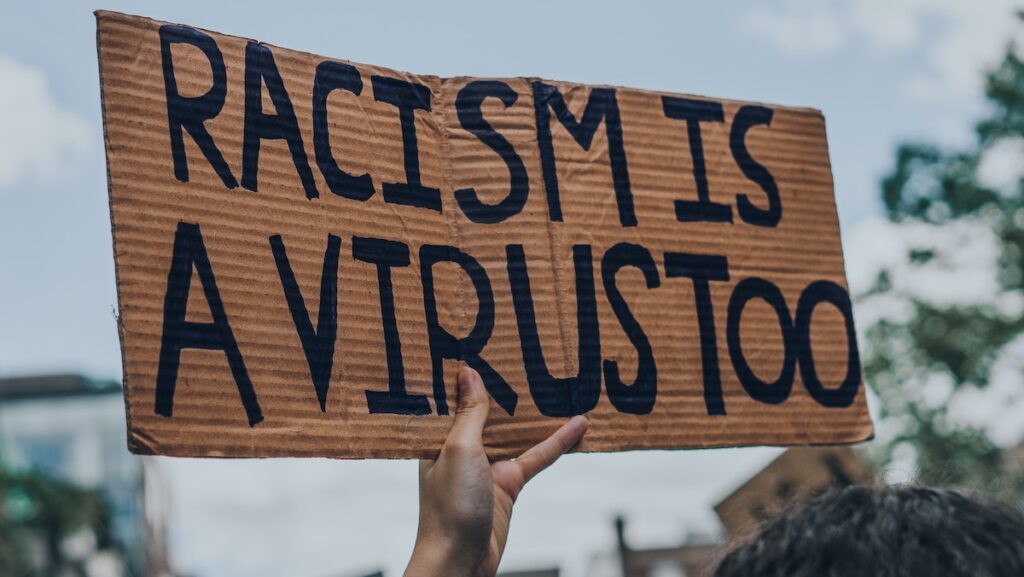
Experiences of race discrimination and victimisation can have a negative effect on mental health. Chae and colleagues aimed to explore the effects of vicarious racism during the global pandemic.
Methods
The team randomly recruited 1,448 participants in the US over the age of 18 using quota sampling via a market panel’s software program, ensuring an even participation rate from various racial minority groups.
Participants were asked to indicate the frequency (on a 6-point scale) of racist comments they experienced by the public, by the media outlets, by partners, friends and family, or politicians and other figures. Thinking of their experiences during the Covid-19 pandemic, participants were also asked to:
- Rate the frequency of avoidance of places, feeling on guard, being vigilant, and being fearfully related to racism
- Self-report symptoms of depression and anxiety (PROMIS measure: Pilkonis et al., 2011).
Age, gender, nativity, city of residence, relationship status, children, education, work status, income, and health insurance status were included in the survey as well.
Results
Data from 604 Asian Americans and 844 Black Americans were analysed in this study. Of the Asian American participants, 58.9% were US-born, and 34.9% were male. Of the Black American participants, 92.8% were US-born and 31.6% were male.
Over half of the respondents reported having experienced vicarious racism ‘more than usual’ (51% of Asian and 61.6% of Black respondents). According to a majority of the respondents, personal experiences of racial discrimination were at similar levels (62.3% Asian and 63.7% of Black respondents), with some saying there had been less frequent (11.9% Asian and 15.9% of Black respondents). The reported frequency of incidents was between once and a few times a month for Asian respondents, and between a few times a month and once a week for Black respondents.
Large majorities of Asian (72.8%) and Black (87.2%) participants reported thinking at least sometimes about these experiences, being at least somewhat distressed (89.6% of Asian and 91.2% of Black respondents) and being concerned (68.7% in Asian versus 85.1% in Black respondents).
Furthermore, Asian participants reported vigilance between a few times a month and once a week; Black participants between once a week and a few times a week. Black (67.1%) more often than Asian (40%) participants reported being vigilant on at least a weekly basis, with being afraid to be discriminated against because of race the most frequent type of vigilance.
Vicarious racism and ‘racism discrimination vigilance’ could predict anxiety and depression levels for both Asian and Black participants, though the effect was smaller when corrected for demographics of age, gender, and other socio-economic variables (nativity, city, relationship status, education, work status, ratio of annual household income to poverty threshold, health insurance, and social desirability response bias).
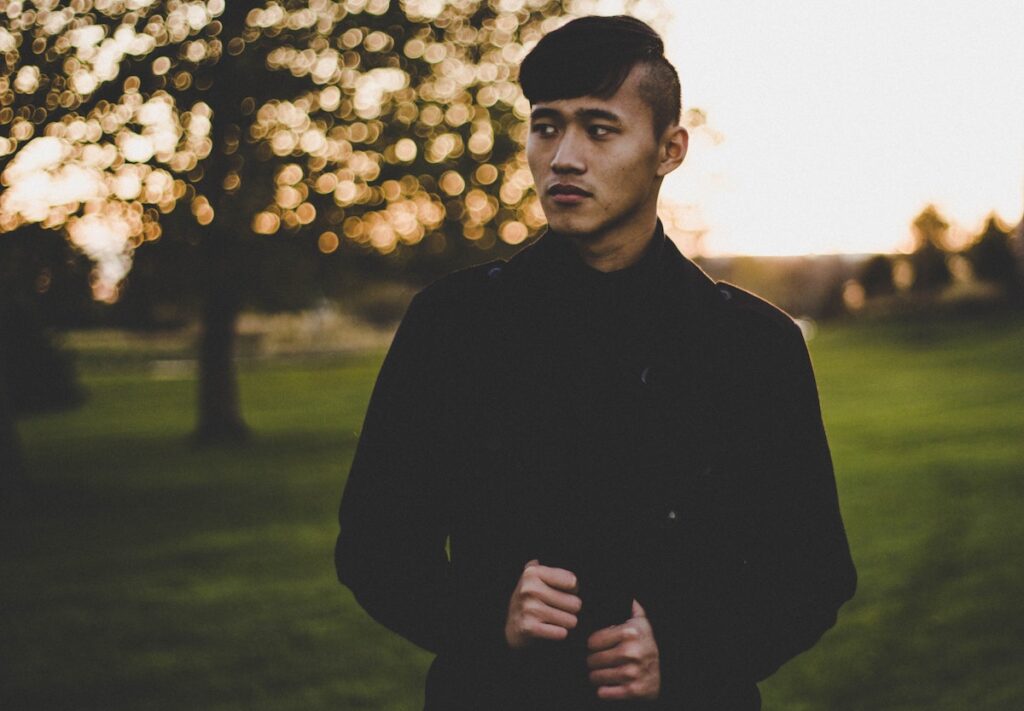
This research suggests that vicarious discrimination is a common experience in people with an Asian and Black minority ethnic background, with 91.9% of the Asian and 98.1% of the Black participants reporting experiencing vicarious racism in this study alone.
Conclusions
The authors concluded that vicarious discrimination and vigilance are common experiences amongst individuals with an Asian and Black minority ethnic background and could either independently and together predict anxiety and depression, even when corrected for possible confounders. Vicarious discrimination, vigilance, concern, and distress may occur as a problem and, according to this evidence, is more frequent in Black individuals.
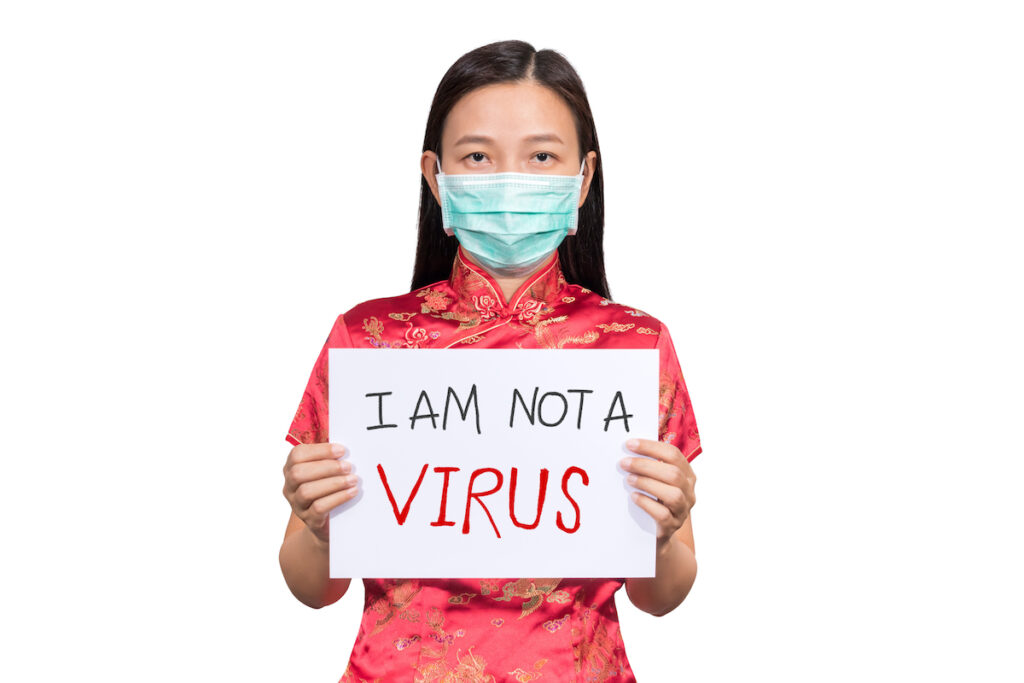
More than half of the participants with an Asian heritage reported an increase in vicarious racism since the start of the COVID-19 pandemic, which could independently predict worse mental health outcomes in these populations.
Strengths and limitations
The analyses supports preliminary indications of the occurrence of vicarious racism and related vigilance for mental health outcomes. The authors rightly point out that the cross-sectional design does not warranty any causal conclusions, and in fact, poorer mental health may be associated with increased sensitivity and possible bias in the perception of racism. The authors also explain that the context of the study during the Covid-19 pandemic could have highlighted health inequalities that may have skewed perception further. The study was conducted in 5 US cities, which is cause for hesitation in generalisation to a UK context, for example, due to differences between the UK and US in possible cultural factors and prevalence of people from different ethnic backgrounds in the populations.
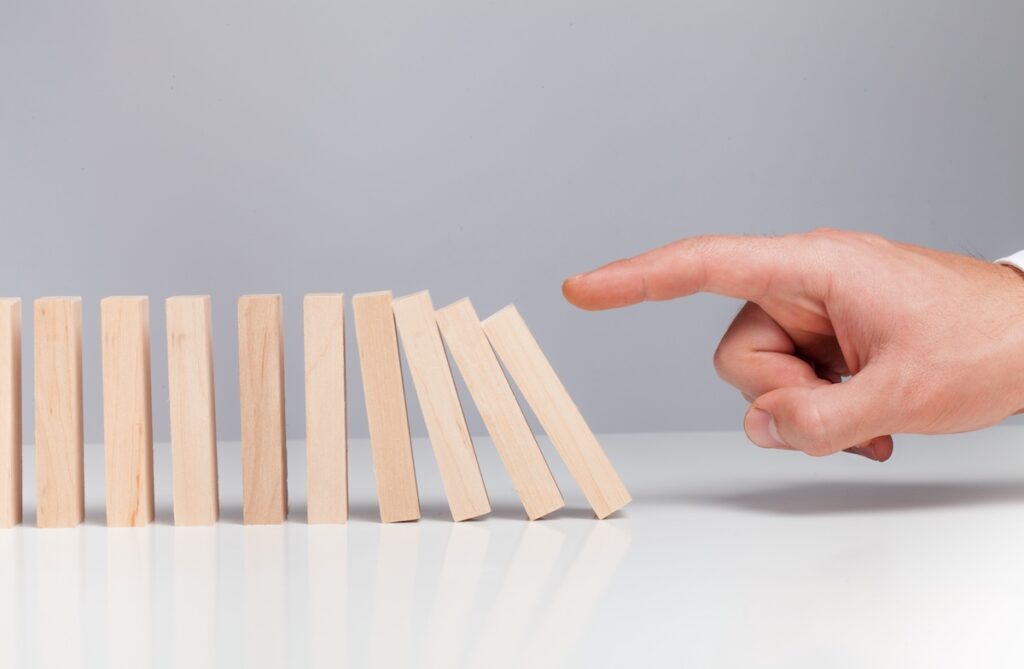
The focus on the experiences of vicarious racism and vigilance is an asset, but it would be helpful to also measure the frequency, chronicity, and severity of these experiences to interpret the findings within the right context.
Implications for clinical practice and research
It is important for the clinical practitioner to be aware of any possible effects of racism and vicarious racism on mental health and wellbeing, even if the person who seeks help may not highlight this in the first instance. It has been recommended to include experiences of discrimination on the basis of gender and race in clinical health assessments (De Rose et al., 2021). Social identity may play a role in help-seeking behaviours and engagement with therapy, and the stigma of mental illness may have different aspects to it across different ethnic groups (Misra et al., 2021). It is important to be aware that though the social identity of members of a minority group may not necessarily mean that they have less trust in the competency of healthcare staff (Solnick et al., 2020), it may play a role in engagement with care (Prajapati & Liebling, 2021). Racism, mental health, provider trust, and medication adherence can be related and interact with each other (Pugh et al., 2021).
Discussion
The results of the primary study are in line with previous findings on vicarious racism being a common experience from those from ethnic minority backgrounds.
The Covid-19 pandemic has fuelled racially profiled hate on social media (Stechemesser et al., 2020), with online behaviours considered to be likely predictors of offline violence (Williams et al., 2020). A large majority of adults and children from an Asian background have reported vicarious Covid-19 related racial discrimination, both in-person and online (Cheah et al., 2020). Moreover, highly public racial violence can lead to decreased mental health in others with the same ethnic background as reported for African Americans (Curtis et al., 2021), which may be related to increased risk for severe depression or suicidality in the following months (Das et al., 2021). There needs to be more attention not only for direct, but indirect racist victimisation experiences in mental health practice, policy and research.
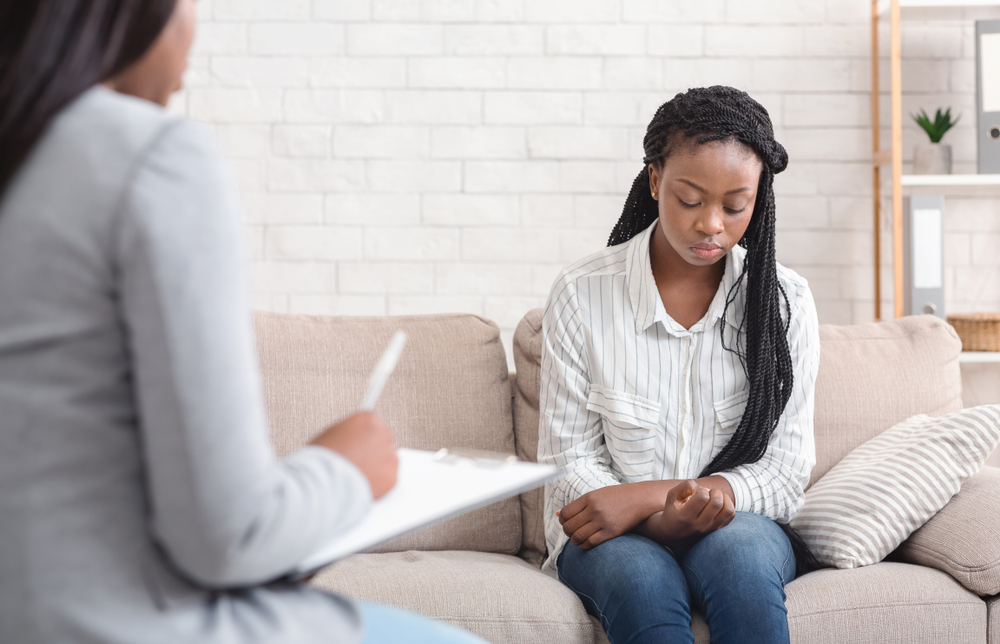
Mental health practitioners should be aware that direct racist experiences will affect their clients, but also that vicarious racism may play a part in the mental distress that many people experience.
Commentary by Christina McClure
An increase in sinophobic (hate) speech online, for example by public figures calling Covid-19 the ‘China virus’ likely contributed to physical hate crime. As a member of the ESEA (East and South East Asian) community myself, I have noticed that reports of these incidents, sometimes on a daily basis, would create feelings of fear and anxiety among ESEA people and make them more likely to be reclusive and depressed. As a result, many online groups have formed in response to create a support network for people feeling isolated and unprotected, such as the British East and South East Asian Network (BESEAN, 2021) (besea.n) and Stop Asian American Pacific Islander Hate (StopAAPIHate, n.d.) and Voice ESEA (2021; voiceesea, n.d.).
To target racism, we need to change societal stereotypes about people from East and South Asian backgrounds. ESEA people are very underrepresented in media, often depicted as tropes such as comedic relief, the “Martial Artist”, the “Model Minority” or the “Exotic Woman”. This perpetuates already established stereotypes and creates biases for people who meet or see ESEA people. Orientalism and considering ESEA people as “exotic” and “uncivilised”, or the Model Minority Myth are a form of ‘othering’ those from ESEA backgrounds and this can put them on an unequal basis. The Model Minority Myth reflects the belief that if ESEA people keep quiet and work hard then they can find success and will not be targeted. This means that many ESEA people have lived their lives in the West trying to create as little fuss as possible, believing this would protect them. The Model Minority Myth creates a form of victim blaming.
See for Western perception and othering of eastern culture for example Said (2003); on the fetishisation of Asians and how individuals consciously or unconsciously perpetuate existing stereotypes: Park (2021) and on the effects of internalisation of eastern stereotypes: Hong (2020).
Liesbeth Tip adds:
Being aware of own bias can help to identify and fight racism in society by doing so within our communities and immediate environments. For those who want to become aware of and challenge their own bias:
- ‘Personal Self-Assessment of Anti-Bias Behavior’ (Anti-Defamation League, 2021).
- For young people, Childline (2021) provides a few informative videos on racial bias awareness on their website.
Furthermore, it may be good to be aware of certain behaviours that could be perceived as offensive, condescending or objectifying by some (Fusion, n.d.). Recognising white privilege is important to address racism, without pointing the blame to readers, but to promote an understanding of different socialisation experiences and perceptions of racism (e.g. DiAngelo, 2018; Eddo-Lodge, 2018; Saad, 2020).
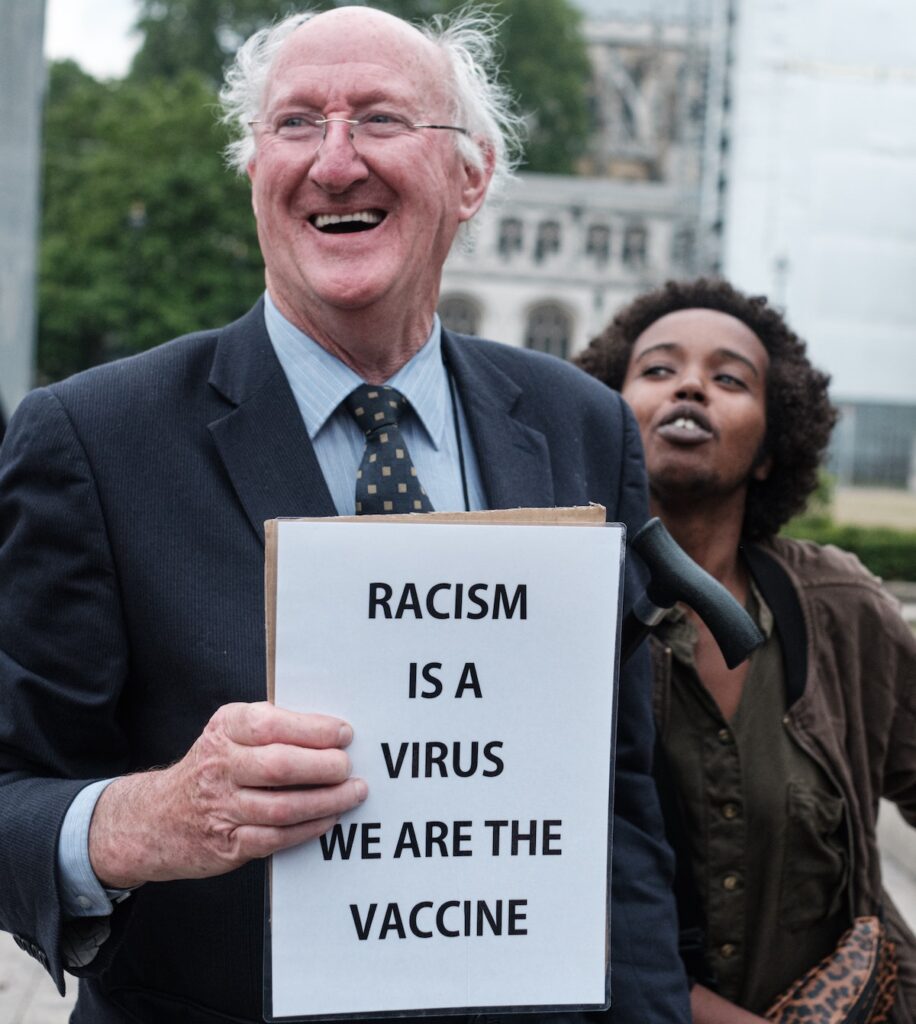
Recognising white privilege is important to address racism, without pointing the blame to readers, but to promote an understanding of different socialisation experiences and perceptions of racism.
A personal account by Jingni Ma (TW: Racism; abuse)
In 2019, I was physically attacked for a hate crime. I still experience impairments in my daily life and work because of remaining physical and mental health symptoms: an arm fracture and my frightening memories. This incident was followed by two additional incidents; one involving verbal abuse towards me and my husband. We felt compelled to relocate because of our experiences and the resulting anxiety and hypervigilance. However, once we had moved, we experienced another verbal racist attack. These incidents happened in places that are part of our lives: a restaurant, on the street, on the bus, near a grocery store, and we can’t avoid these. The mental and physical effects have impacted our social lives, it has made us oversensitive to behaviours and words of people on the street, and I have avoided going places or traveling by bus since.
The most afflicting part of all this is that I have to feel unsafe because of what I cannot hide or change—the colour of my face. I am no longer an international student, I become a ‘yellow, Asian, unwelcome foreigner’. It makes me doubt if I will ever be recognised as a member of my society. I feel like they have made me out to be like dirt on a white wall, and this is very difficult to deal with. Racism forces people to be differentiated, labelled, stereotyped, on the basis of ignorance and closed-mindedness. We do not deserve verbal or physical abuse.
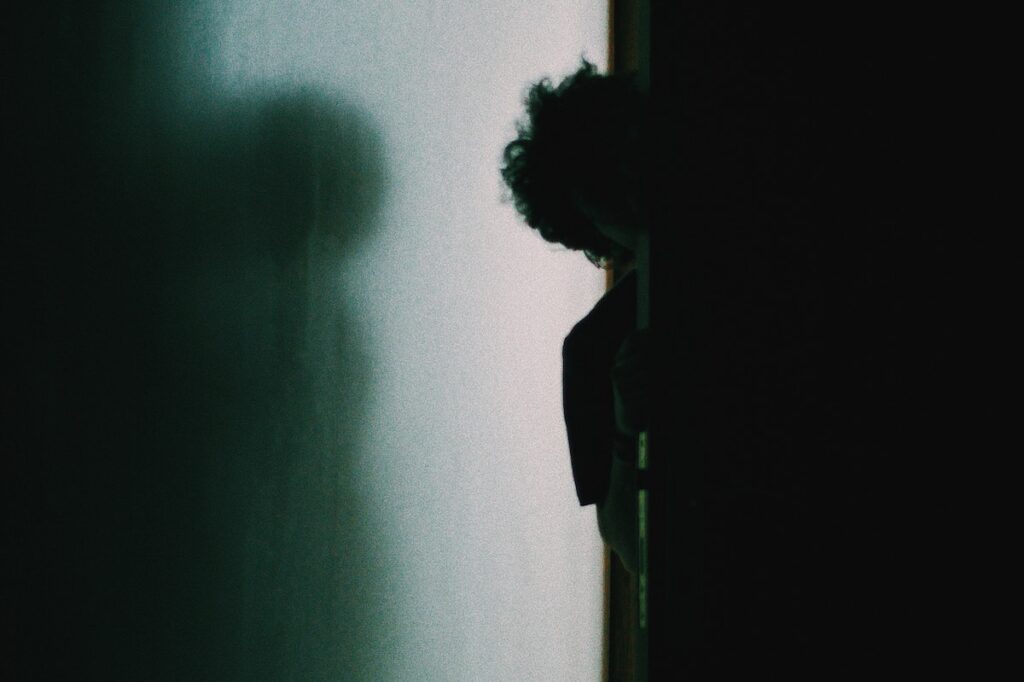
“I have to feel unsafe because of what I cannot hide or change—the colour of my face. It makes me doubt if I will ever be recognised as a member of my society.”
Supporting those affected by racism
If racism, racist discrimination, bullying and harassment, and hate crimes are so detrimental to mental health, what can we do to help those that have been affected? Should we intervene, show social support, or maybe both?
Social support is generally thought to be a protective factor as a buffer against the impact of perceived racism. It can protect against the development of anxiety (Hall et al., 2019) and depressive symptoms (Hall et al., 2019; Lemon et al., 2021; Woo & Jun, 2021) after experiencing discrimination, and decrease worrying after experiencing micro-aggressions (Salami et al., 2021).
Unfortunately, there is very limited research available on bystander behaviour for racist discrimination, racial bullying, and racially motivated hate crimes, and there are no studies available at all on the effects of bystander behaviours on the victim. However, studies on bystander behaviour in different situations may help inform us as to how we can be better bystanders, and how we can make a difference by motivating others to be better bystanders. The term ‘bystander’ is often used to indicate those individuals who are present in dangerous situations, but are not the victim of that situation themselves – or at least not initially. The term ‘bystander effect’ is used to describe the effect that it is less likely for someone to intervene when there are other ‘bystanders’ present (Darley & Latanee, 1968). There are different ways individuals can act (Liebst et al., 2019; Rivers, 2012; Saunders, 2016). However, studies of sexual assault suggest that only half of bystanders intervene (Witte et al., 2017). Situational, personal, and cultural factors may play a role in our willingness to help (Sasson et al., 2014), including the (safety of the) neighbourhood (Zhong, 2010), beliefs that the situation is being handled, but also characteristics of the victim and the relationship between the victim and perpetrator, or the bystander feeling unsafe (Hoxmeier 2019). Bystanders sometimes may not intervene because they think it is not their business or because they are unsure what to do, or they may decide to go away and get assistance (Hoxmeier 2019). Bystanders may be more likely to intervene when a situation is dangerous because of perceived urgency and less ambiguity (Fischer et al., 2011).
Furthermore, beliefs about consequences make individuals reluctant to speak up for equality and diversity, such as avoidance of confrontation and fears or ruining friendships or peer rejection (Vianden & Gruber, 2020). Perceived negative consequences may matter more from peers than from authority figures when it comes to engagement with ethnic victimisation (Bayram Özdemir & Özdemir, 2020).
It is important to recognise individual factors in bystander behaviour, so as not to appoint blame for not responding. How a person responds to stress may be a key determining factor of bystander behaviour (Hortensius & De Gelder, 2018). Distress because of being a witness of bullying can be explained by our own experiences with bullying (Nielsen et al., 2021) and may make some people less likely to intervene. It is also important to not view bystanders in isolation but look at their broader environment (McMahon et al., 2020).

If racism, racist discrimination, bullying, harassment, and hate crimes are so detrimental to mental health, what can we do to help those affected?
Bystander training
Bystander training has not been researched in a structured way in a racism context, but has shown to increase active bystander behaviour in initial trauma care (Tatebe et al., 2019) dealing with suicidality (Hill et al., 2021), it can help reduce rape myths, decrease barriers to intervention and increase willingness to intervene (Powers & Leili, 2018), can lead to decreased ‘rape myth acceptance’, higher recognition of interpersonal violence and a higher responsibility of own role in resolving the problem (Amar et al., 2012). Incorporating individual responses and tailoring bystander training may make it more effective. Moreover, identifying inconsistencies between self-perception and action can increase the likelihood to intervene (Murrell, 2020). Not intervening is related to worse mental health outcomes 18 months later, whereas intervening was not (Witte et al., 2017). Increasing the likelihood to intervene may improve mental health not just of the victim, but also of the bystander (Nielsen, 2021). To change racism, targeting beliefs about outgroups by enhancing views of outgroups can be beneficial (Legault et al., 2021). A 20-minute video-based bystander education training illustrating strategies to intervene can change the racial bias and intention to intervene after 4 weeks (Santacrose et al., 2019).
In the UK, BESEAN (2021) offers free bystander training, using vignette-based scenarios followed by small-group discussions which provide a space to consider behaviour options, and how to decide whether or not to intervene. By practicing thinking through the different scenarios on the street, on public transport, on social media, and imagining victims from different ages, genders, and sexual orientation, one can be prepared and have a repertoire to draw from when confronted with a risky situation. Recognising signals early on before escalation is discussed too. It is also emphasised to think about what the person who is victimised may want. Some may not want the police to be involved; also, the victim may not immediately trust you. One may want to consider different types of possible support, the social aspects of the situation, the relationship between the victim and offender, and possible consequences of sharing information with others. Key messages of the training are to ‘be safe, de-escalate, and care for the victim’. Hollaback! (2021) is another US-based organisation offering free bystander training, focusing on aspects such as distracting the perpetrator, delegating or seeking help and assistance, delay–keeping contact with the victim, later on, being direct in the situation, and documenting what happened.
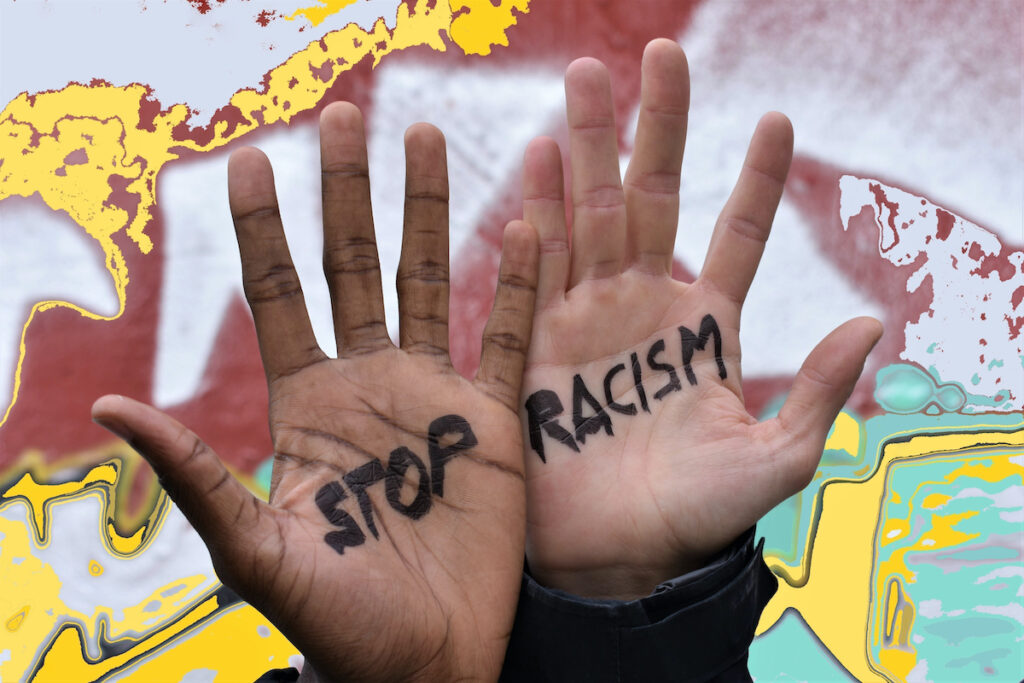
Bystander training focusing on the context of racism and inequality can be helpful to build confidence and learning skills to intervene while staying safe.
Recommendations for the general public
How to be a more active bystander?
This section is informed by evidence from the literature combined with our own experiences, and information from the BESEA (2021) bystander training and Hollaback! (2021) webinars. The following recommendations in-a-nutshell are made on how to be a more active bystander:
- Be safe!
- Be aware of the bystander effect and that biases and beliefs about the situation may influence willingness to act.
- Be prepared: know options on how to act – you can prepare for this by talking to others and by following a bystander training that discusses skills and scenarios. Think through different types of behaviour options: not just how to intervene but also when/how to get help.
- Know your own preferred responses so these can be (more) independent from other bystanders – what is it that you would want to do?
- Think through any scenarios and how you would want to act.
- Know what you would be comfortable doing – know your own boundaries.
- Be aware that stress levels may interfere with the willingness to act, but also, practice self-care. Having a range of behaviour options may help weigh up what suits best. Be aware you can be a bystander in the situation, or after the situation. It’s never too late to ask someone how they are doing.
- Be aware of your own sense of social identity and belonging, and how this may impact views and perceptions related to willingness to act.
- Be aware that stress levels may interfere with your willingness to act.
- Check with the victim how you can best support them.
If you cannot act immediately, sharing some supportive words afterwards can be so helpful and heart-warming. I feel that any kind of help is welcome no matter the timing of the incident. When we encounter this kind of thing, even the slightest regard from the people around us can be so supportive. If you are the victim of a racist attack, it’s helpful to stand up and support the people who encountered similar incidents.
– Jingni Ma
Final thoughts and some resources
The aim of this blog was to help create more awareness of racism, the effects of racism and vicarious racism on mental health, and provide information on how to be an active bystander. We firmly believe that to change racist beliefs in society, there is not one group in society that needs to address this topic – we all need to act and work together.
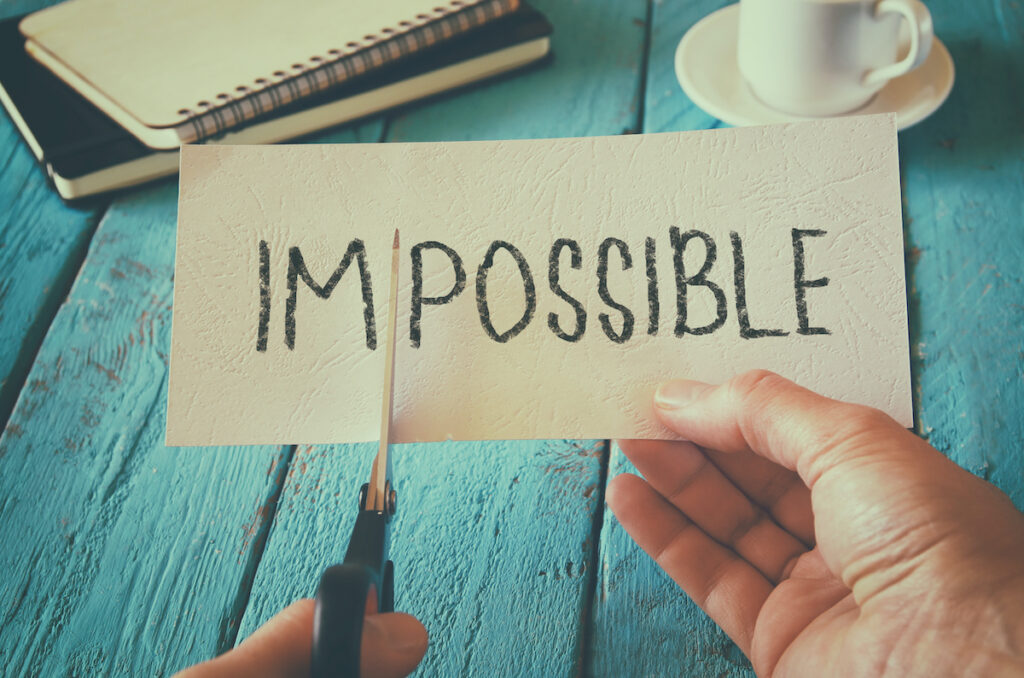
This blog is a call for action to be a more active bystander when racist events are happening around you and challenge dominant narratives around race.
Statement of interests
None.
Resources and helplines
We have included a few helpful resources here, but you can read the full list on the website BESEA (2021).
Victim support – specialist practical and emotional support to victims and witnesses; Phone: 08 08 16 89 111
Citizen advice – free, confidential information and advice; Adviceline: 03444 111 444
True Vision – gives information about hate crime or incidents and advice on how to report it
Stop Hate UK – provides independent, confidential and accessible reporting and support; Phone: 0800 138 1625
Tell MAMA – records and measures anti-Muslim incidents and supports victims
Links
Primary paper
Chae, D. H., Yip, T., Martz, C. D., Chung, K., Richeson, J. A., Hajat, A., Curtis, D. S., Rogers, L. O., & LaVeist, T. A. (2021). Vicarious Racism and Vigilance During the COVID-19 Pandemic: Mental Health Implications Among Asian and Black Americans. Public health reports (Washington, D.C. : 1974), 136(4), 508–517.
Reports on racism
Besea.n [@besea.nn] (2021, April 9). Recently we’ve seen a lot of numbers flying around concerning Anti-ESEA hate crime, so we’ve investigated the data.
Response to the Call for Evidence on Ethnic Disparities and Inequality in the UK.
Commission of Race and Ethnic Disparities (2021). Summary of responses to the call for evidence.
Fujiwara, D. (2021) for The Centre for Excellence in Community Investment (CECI, 2021, March). Experiences of racism amongst East and South East Asian people.
Other references
Anti-Defamation League, Education Division (2021). Personal Self-Assessment of Anti-Bias Behavior.
Amar, A. F., Sutherland, M., & Kesler, E. (2012). Evaluation of a bystander education program. Issues in mental health nursing, 33(12), 851–857.
Bayram Özdemir, S., & Özdemir, M. (2020). The Role of Perceived Inter-Ethnic Classroom Climate in Adolescents’ Engagement in Ethnic Victimization: For Whom Does it Work?. Journal of youth and adolescence, 49(6), 1328–1340.
Cheah, C., Wang, C., Ren, H., Zong, X., Cho, H. S., & Xue, X. (2020). COVID-19 Racism and Mental Health in Chinese American Families. Pediatrics, 146(5), e2020021816.
ChildLine (2021). Racism and racial bullying.
Curtis, D. S., Washburn, T., Lee, H., Smith, K. R., Kim, J., Martz, C. D., Kramer, M. R., & Chae, D. H. (2021). Highly public anti-Black violence is associated with poor mental health days for Black Americans. Proceedings of the National Academy of Sciences of the United States of America, 118(17), e2019624118.
Darley, J. M., & Latane, B. (1968). Bystander intervention in emergencies: Diffusion of responsibility. Journal of Personality and Social Psychology, 8(4, Pt.1), 377–383.
Das, A., Singh, P., Kulkarni, A. K., & Bruckner, T. A. (2021). Emergency Department visits for depression following police killings of unarmed African Americans. Social science & medicine (1982), 269, 113561.
De Rose, C., Spinola, O., & Buonsenso, D. (2021). Time for Inclusion of Racial and Gender Discrimination in Routine Clinical Assessment. Journal of racial and ethnic health disparities, 8(4), 803–808.
DiAngelo, R. (2018). White Fragility. Why it’s so hard for white people to talk about racism. Penguin Random House UK.
Eddo-Lodge, R. (2018). Why I’m no longer talking to white people about race. Bloomsbury Publishing.
Fischer, P., Krueger, J. I., Greitemeyer, T., Vogrincic, C., Kastenmüller, A., Frey, D., Heene, M., Wicher, M., & Kainbacher, M. (2011). The bystander-effect: a meta-analytic review on bystander intervention in dangerous and non-dangerous emergencies. Psychological bulletin, 137(4), 517–537.
France (September 9, 2021). “Race hate crime soared in London during Covid pandemic”.https://www.standard.co.uk/news/crime/race-hate-crime-soared-london-during-covid-pandemic-mayor-sadiq-khan-b954489.html
Hall, B. J., Pangan, C., Chan, E., & Huang, R. L. (2019). The effect of discrimination on depression and anxiety symptoms and the buffering role of social capital among female domestic workers in Macao, China. Psychiatry research, 271, 200–207.
Hill, K., Somerset, S., Schwarzer, R., & Chan, C. (2021). Promoting the Community’s Ability to Detect and Respond to Suicide Risk Through an Online Bystander Intervention Model-Informed Tool. Crisis, 42(3), 225–231.
Hong, C. P. (2020). Minor feelings: an Asian American reckoning. First edition. New York: One World.
Hortensius, R., & de Gelder, B. (2018). From Empathy to Apathy: The Bystander Effect Revisited. Current directions in psychological science, 27(4), 249–256.
Hoxmeier, J. C., O’Connor, J., & McMahon, S. (2019). “She Wasn’t Resisting”: Students’ Barriers to Prosocial Intervention as Bystanders to Sexual Assault Risk Situations. Violence against women, 25(4), 485–505.
I am not a fetish or Model Minority: Redefining what it means to be API in the Entertainment Industry (n.d.). Geena Davis Institute for Gender in Media.
Khan, A. (March 23, 2021). “‘I don’t feel safe’: Asians in the UK reflect on a year of hatred.”.
Legault, L., Coleman, D., Jurchak, K., & Scaltsas, N. M. (2021, July 13). Reducing Prejudice By Enhancing the Other Rather than the Self.
Lemon, E. D., Vu, M., Roche, K. M., Hall, K. S., & Berg, C. J. (2021). Depressive Symptoms in Relation to Adverse Childhood Experiences, Discrimination, Hope, and Social Support in a Diverse Sample of College Students. Journal of racial and ethnic health disparities, 10.1007/s40615-021-01038-z. Advance online publication.
Levine, M., & Crowther, S. (2008). The responsive bystander: how social group membership and group size can encourage as well as inhibit bystander intervention. Journal of personality and social psychology, 95(6), 1429–1439.
Liebst, L. S., Philpot, R., Bernasco, W., Dausel, K. L., Ejbye-Ernst, P., Nicolaisen, M. H., & Lindegaard, M. R. (2019). Social relations and presence of others predict bystander intervention: Evidence from violent incidents captured on CCTV. Aggressive behavior, 45(6), 598–609.
McMahon, S., Burnham, J., & Banyard, V. L. (2020). Bystander Intervention as a Prevention Strategy for Campus Sexual Violence: Perceptions of Historically Minoritized College Students. Prevention science: the official journal of the Society for Prevention Research, 21(6), 795–806.
Misra, S., Jackson, V. W., Chong, J., Choe, K., Tay, C., Wong, J., & Yang, L. H. (2021). Systematic Review of Cultural Aspects of Stigma and Mental Illness among Racial and Ethnic Minority Groups in the United States: Implications for Interventions. American journal of community psychology, 10.1002/ajcp.12516. Advance online publication.
Murrell, A. (2020). Why someone did not stop them? Aversive racism and the responsibility of bystanders. Equality, Diversity and Inclusion: An International Journal.
Nielsen, M. B., Rosander, M., Blomberg, S., & Einarsen, S. V. (2021). Killing two birds with one stone: how intervening when witnessing bullying at the workplace may help both target and the acting observer. International archives of occupational and environmental health, 94(2), 261–273.
Pilkonis PA, Choi SW, Reise SP, et al. Item banks for measuring emotional distress from the Patient-Reported Outcomes Measurement Information System (PROMIS®): depression, anxiety, and anger. Assessment. 2011;18(3):263-283. doi: 10.1177/ 1073 1911 11411667
Pugh, M., Jr, Perrin, P. B., Rybarczyk, B., & Tan, J. (2021). Racism, Mental Health, Healthcare Provider Trust, and Medication Adherence Among Black Patients in Safety-Net Primary Care. Journal of clinical psychology in medical settings, 28(1), 181–190.
Powers, R. A., & Leili, J. (2018). Bar Training for Active Bystanders: Evaluation of a Community-Based Bystander Intervention Program. Violence against women, 24(13), 1614–1634.
Prajapati, R., Liebling, H. Accessing Mental Health Services: a Systematic Review and Meta-ethnography of the Experiences of South Asian Service Users in the UK. J. Racial and Ethnic Health Disparities (2021)
Rivers I. (2011). Morbidity among bystanders of bullying behavior at school: concepts, concerns, and clinical/research issues. International journal of adolescent medicine and health, 24(1), 11–16.
Saad, L. F. (2020). Me and White Supremacy. How to Recognise Your Privilege, Combat Racism and Change The World. Quercus Editions.
Said, E. W. (2003). Orientalism. Penguin Classics.
Salami, T., Lawson, E., & Metzger, I. W. (2021). The impact of microaggressions on Black college students’ worry about their future employment: The moderating role of social support and academic achievement. Cultural diversity & ethnic minority psychology, 27(2), 245–255.
Santacrose, L. B., Laurita, A. C., & Marchell, T. C. (2020). Intervene: Modeling Pro-Social Bystander Behavior in College Students through Online Video. Health communication, 35(4), 397–409.
Sasson, C., Haukoos, J. S., Ben-Youssef, L., Ramirez, L., Bull, S., Eigel, B., Magid, D. J., & Padilla, R. (2015). Barriers to calling 911 and learning and performing cardiopulmonary resuscitation for residents of primarily Latino, high-risk neighborhoods in Denver, Colorado. Annals of emergency medicine, 65(5), 545–552.e2.
Saunders, R. Kyle, “The Biased Bystander: How Homophobia Affects Intervention in Physical Fights” (2016). Graduate Theses, Dissertations, and Problem Reports. 6572.
Solnick, R. E., Peyton, K., Kraft-Todd, G., & Safdar, B. (2020). Effect of Physician Gender and Race on Simulated Patients’ Ratings and Confidence in Their Physicians: A Randomized Trial. JAMA network open, 3(2), e1920511.
Stechemesser, A., Wenz, L., & Levermann, A. (2020). Corona crisis fuels racially profiled hate in social media networks. EClinicalMedicine, 23, 100372.
Stop Asian American Pacific Islander Hate (2021).
Swift, C., Bull, D. & Mature, N. (May 3, 2021). “Asian hate crime in UK increases during pandemic”.
Tatebe, L., Speedy, S., Kang, D., Barnum, T., Cosey-Gay, F., Regan, S., Stone, L., & Swaroop, M. (2019). Empowering Bystanders to Intervene: Trauma Responders Unify to Empower (TRUE) Communities. The Journal of surgical research, 238, 255–264.
Voice ESEA (2021).
Vianden, J., & Gruber, C. (2020). “It’s hard to speak up”: Lessons learned from engaging U.S. white college men in conversations on racism. GMS journal for medical education, 37(2), Doc16.
Witte, T. H., Casper, D. M., Hackman, C. L., & Mulla, M. M. (2017). Bystander interventions for sexual assault and dating violence on college campuses: Are we putting bystanders in harm’s way?. Journal of American college health : J of ACH, 65(3), 149–157.
Woo, B., & Jun, J. (2021). COVID-19 Racial Discrimination and Depressive Symptoms among Asians Americans: Does Communication about the Incident Matter?. Journal of immigrant and minority health, 1–8. Advance online publication.
Zhong L. Y. (2010). Bystander intervention and fear of crime: evidence from two Chinese communities. International journal of offender therapy and comparative criminology, 54(2), 250–263.
Photo credits
- Photo by Alexis Fauvet on Unsplash
- Photo by Rolande PG on Unsplash
- Photo by J’Waye Covington on Unsplash
- Photo by Ehimetalor Akhere Unuabona on Unsplash
- Photo by Anika Huizinga on Unsplash
- Photo by Clay Banks on Unsplash
